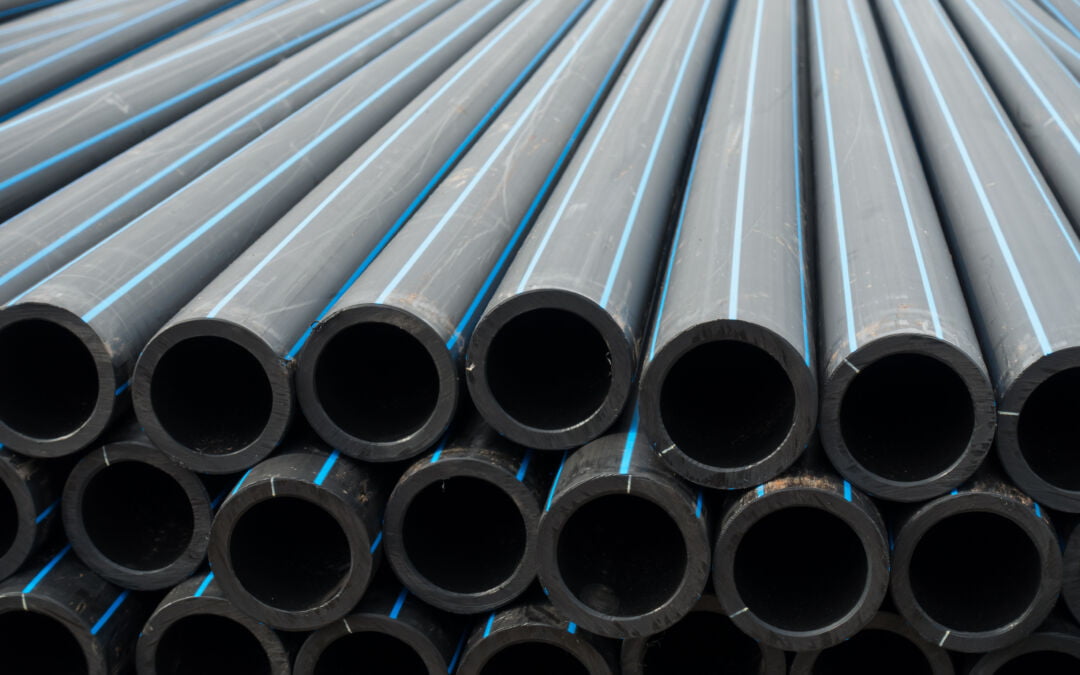For decades, a home’s plumbing has been crafted from different materials based on characteristics such as malleability and durability, factors like availability and costs, and developments with relation to safety and water pressure. With so many different variables, there are obviously certain options that are better than others for home plumbing. With that being said, many homes still have dated plumbing materials installed in their homes. While there are the obvious ones talked about a lot, such as lead pipes, there is a second plumbing material that causes a number of issues, too. Polybutylene, also known as PBT or Poly-B pipes, could be causing you issues and you may not even know.
What is Poly-B Material?
Poly-B pipes are an inexpensive plumbing solution that was popular in the 1970s. Poly-B pipes are usually grey or black and fairly flexible, which made them easy to install. There are over 700,000 homes in Canada with Poly-B pipes due to the notion that this pipe was one for the future! These pipes were advertised as lasting for 30 years. That idea was short-lived after problems began to emerge with the pipes after only 10 to 15 years. By 1996, the pipes ceased production and were replaced with copper pipes or PVC tubes.
Problems with Poly-B Pipes
Problems with Poly-B pipes only emerged about 10 or 15 years after installation. The list of issues include:
- Leaks
Because of variance in water pressure, some pipes began to leak. Part of the reason they leak is because of the way they are fastened to one another. Each pipe is fixed together with help from copper fasteners. The slow leaks cause water damage and eventually mould.
- Freezing
If your pipes are not properly insulated or your home isn’t winterized, your Poly-B pipes will freeze and could burst.
- Bursting
Poly-B pipes are almost like volcanos, everything may look fine, then all of a sudden, you have a huge explosion issue on your hands. That’s because pipes look fine from the outside but are so incredibly weak inside.
- Degradation
Poly-B pipes degrade from the inside out with exposure to heat and even low levels of chemicals like chlorine. Considering many Poly-B pipes were connected to water heaters, and municipal water often relies on chlorine to purify their water, there were a number of unexpected burstings.
- Cracks
The pipes themselves can crack if they aren’t installed perfectly. The pipes will crack if fasteners aren’t tightened enough (but will obviously leak if they are too loose).
How do you know if You have Poly-B Pipes?
You can tell that you have Poly-B pipes based on the colour and the markings on the pipes. Poly-B pipes are fit together with metal rings made from brass or copper. The pipes are typically grey in colour, though they can be black white or blue as well. The best way to tell for sure is to phone a plumber. You may want to do this sooner rather than later to avoid potential disaster.
What to do About Poly-B Pipes
With Poly-B pipes, it is not a matter of if but when you will run into issues. You should contact a trusted plumber to repipe your home and replace your dated Poly-B pipes. The experienced plumbers at Waterflow Plumbing Solutions have years of experience in the industry and stellar reviews from happy customers. Let us provide your family with plumbing security in the Vancouver area!
Call Wonderflow Plumbing Solutions today for a free consultation!


Recent Comments